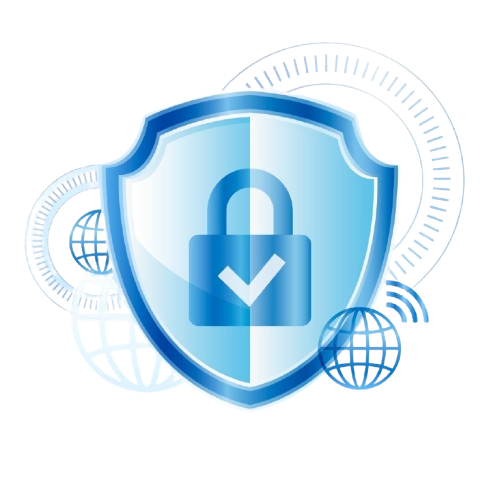In modern healthcare settings, diagnostic equipment is essential for accurate and timely patient care. Devices like ECG machines, ultrasound scanners, X-ray units, ophthalmoscopes, and blood analyzers are the backbone of medical diagnostics. These machines are often significant investments, so maintaining them properly is not just a matter of performance—it’s about protecting your investment and ensuring patient safety.
In this article, we’ll walk you through the best practices for maintaining diagnostic equipment to extend its lifespan and reliability.
Why Maintenance Matters
Regular maintenance of diagnostic equipment brings several key benefits:
-
Prevents breakdowns and costly repairs
-
Extends the life of expensive equipment
-
Ensures accurate diagnostic results
-
Reduces downtime in busy clinics or hospitals
-
Maintains compliance with safety and healthcare standards
Neglecting maintenance, on the other hand, can result in misdiagnosis, legal liability, and higher long-term costs.
1. Understand the Manufacturer’s Guidelines
Every diagnostic device comes with an operating manual provided by the manufacturer. This is the best place to start. These manuals offer valuable information on:
-
Recommended maintenance schedules
-
Proper usage and storage instructions
-
Cleaning agents that are safe to use
-
Calibration intervals
-
Troubleshooting tips
Tip: Create a maintenance logbook to track these schedules for each piece of equipment.
2. Keep Equipment Clean and Sterile
Cleanliness is critical in healthcare environments. Dust, body fluids, and residues can affect both the hygiene and performance of devices.
Cleaning Tips:
-
Use lint-free cloths and non-abrasive cleaners recommended by the manufacturer
-
Avoid using harsh chemicals that may corrode sensitive parts
-
Disinfect contact surfaces regularly, especially in between patient use
-
Clean vents, fans, and cooling systems to prevent overheating
Examples:
-
For ECG machines, regularly clean electrodes and cables.
-
For ultrasound machines, wipe the probes with appropriate disinfectants after each use.
3. Calibrate Regularly
Calibration ensures your diagnostic tools provide accurate readings. Over time, sensors and components may drift from their original settings, which can lead to incorrect diagnoses.
Common equipment needing calibration:
-
Blood pressure monitors
-
Thermometers
-
Oxygen concentrators and pulse oximeters
-
ECG and EEG machines
Schedule calibration based on manufacturer recommendations or usage frequency. Most devices need annual or bi-annual calibration.
4. Store Equipment Properly
Improper storage can lead to moisture buildup, overheating, or accidental damage. After use, devices should be stored in a clean, dry, and dust-free environment.
Storage Guidelines:
-
Keep devices in protective cases when not in use
-
Avoid direct sunlight and areas with high humidity
-
Unplug equipment when not in use to prevent power surges
-
Use battery management practices (don’t leave rechargeable batteries fully discharged or overcharged)
Tip: Use label tags and shelves for easy organization in clinics with multiple diagnostic tools.
5. Handle With Care
Many diagnostic devices are delicate and have sensitive components. Training your staff on proper handling techniques is essential.
Good Handling Practices:
-
Always use two hands when lifting heavy or bulky equipment
-
Avoid pulling on cables or wires; use connectors instead
-
Never operate devices with wet hands or in damp environments
-
Follow proper procedures when plugging in or powering down machines
Example:
For otoscopes and ophthalmoscopes, use protective lens caps and avoid dropping or knocking the device.
6. Perform Regular Inspections
Preventive inspections help identify problems before they lead to major failures. Routine visual and functional checks should be part of your maintenance schedule.
Checklist for Inspections:
-
Check for cracks, loose parts, or worn-out cables
-
Look for warning lights, error codes, or abnormal sounds
-
Confirm displays, buttons, and touchscreens are responsive
-
Inspect battery levels and backup power sources
Use checklists and logs to document inspection results and schedule follow-up actions.
7. Schedule Professional Servicing
While regular cleaning and calibration can be done in-house, professional servicing is recommended at least once a year, especially for complex machines.
Professional technicians can:
-
Run diagnostic tests
-
Replace worn-out parts
-
Update software or firmware
-
Ensure compliance with healthcare regulations
Work with certified service providers familiar with your equipment’s brand and model.
8. Train Your Staff
Human error is a common cause of equipment damage. Make sure all users are trained not only to operate but also to clean and store the equipment properly.
Include training on:
-
Device-specific do’s and don’ts
-
Cleaning protocols
-
Emergency procedures in case of malfunction
-
Reporting and documentation practices
Regular refresher courses ensure everyone stays up to date with best practices.
9. Keep Spare Parts and Accessories Handy
Certain parts like leads, sensors, probes, or power adapters may wear out faster. Keep a stock of essential spare parts to avoid downtime during repairs.
Tip: Buy genuine spare parts from the original manufacturer or certified dealers to maintain performance and safety standards.
10. Use Asset Management Systems
If your clinic or hospital uses a wide range of diagnostic devices, investing in an asset management system can streamline maintenance tasks.
Features of a good system:
-
Track service schedules
-
Maintain warranty and service records
-
Manage inventory and spare parts
-
Receive alerts for upcoming calibration or servicing
These tools are especially useful in large healthcare facilities with hundreds of devices in use.



Leave A Comment